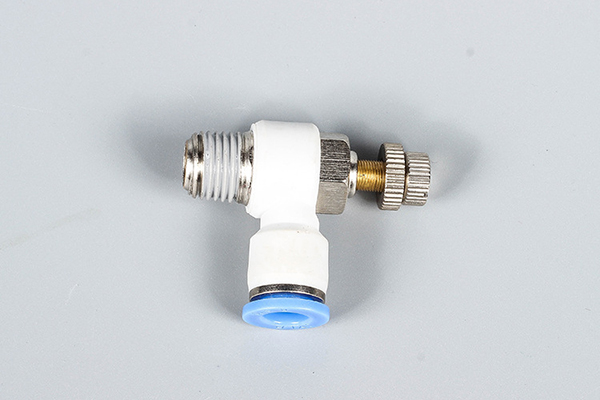The difference between cylinder speed control valve and throttle valve
The first question: The exact difference between a throttle valve and a speed regulating valve is:
Throttle valve controls and adjusts the flow cross-sectional area of fluid in and out of the valve body. When adjusting, the cross-sectional areas of the inlet and outlet are the same.
The speed regulating valve is composed of a one-way valve and a throttle valve. When adjusting, the flow cross-sectional areas of the inlet and outlet are different, and the fluid is only controlled in one direction. , that is, the gas entering the cylinder is not controlled and cannot be adjusted, while the gas discharged is controlled and can be adjusted.
Second question: Does the speed regulating valve on the cylinder control flow or speed, and how does it affect the work of the cylinder:< br />
What needs special clarification and attention is that the hydraulic cylinder can generally use a throttle valve to control the amount of oil in and out, and adjust the speed (the oil will not expand as much as it goes in and out) road). The double-acting cylinder is different, and it is inconvenient to use the throttle valve to adjust the speed (gas entersThe cylinder will expand significantly. If there is no piston damping, it will advance rapidly and uncontrollably, or the speed will change according to the load). The difference between cylinder speed and propulsion force The size cannot be ideally adjusted and controlled. It must be that the flow and pressure are not subject to regulatory restrictions during air intake (the function of the one-way valve), and the other chamber of the cylinder (the gas end to be discharged) is controlled for throttling control to form back pressure damping in the chamber and stabilize the flow. Only by adjusting the cylinder's propulsion speed and thrust to slow or rapid deflation can the cylinder's movement speed and thrust be effectively stabilized. When switching to intake air, it will not be throttled, but will be controlled by the speed control valve when the air chamber at the other end is exhausted. This is the above-mentioned speed regulating valve composed of a one-way valve and a throttle valve.
Remember! To adjust the speed on that side, adjust the exhaust end speed control valve on that side. The intake end cannot be adjusted, and vice versa.
In addition, the speed of a single-acting cylinder (one air port) can be adjusted by a throttle valve (it has a back-pressure spring and a load for damping). But to achieve high requirements for stable speed, a speed regulating valve is needed.

Speed regulating method of cylinder speed regulating valve
There are four speed control methods for cylinder speed control valves: rotor circuit series resistance, changing power supply voltage speed control, cascade speed control, and electromagnetic speed control.
1. Rotor circuit series resistance
For AC wound asynchronous motors. The speed adjustment range is small, the resistor consumes power, and the motor efficiency is low. Generally used on cranes.
2. Change the power supply voltage and speed
The speed regulation range is small, the torque decreases with the voltage amplitude, and three-phase motors are generally not used. Used for speed regulation of single-phase motors, such as fans.
3. Cascade speed regulation
The essence is that the rotor introduces additional electromotive force and changes its size to adjust the speed. Also only used on wound motors, but efficiency is improved.
4. Electromagnetic speed regulation
Only for slip motors. By changing the current of the excitation coil, the speed is steplessly and smoothly adjusted. The mechanism is simple, but the control power is small. It is not suitable to run at low speed for a long time.
The above isCylinder speed regulation The difference between the valve and the throttle valve, the speed adjustment method of the cylinder speed regulating valveContent introduction, if you want to know more related information, please log in to Sunway Pneumaticwww.diancifa.cc to view.






 WhatsApp: +8615857777578
WhatsApp: +8615857777578